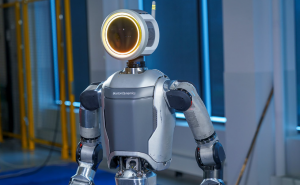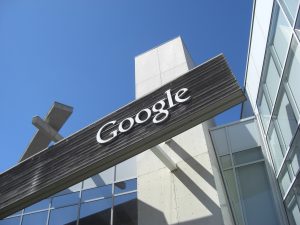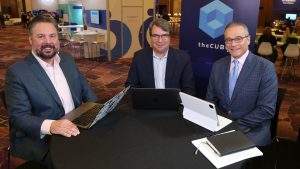4 areas to upgrade for a green data center : Efficient + modern IT
![]() As business increases for an enterprise, so does the amount of demand on the data center from the various applications that an enterprise has running. In the past more physical resources could be thrown at the increased demand; more servers, more storage, more fans and more coolers. Once a data center has grown to the capacity of the physical space it occupies, it doesn’t mean that business demand will stop increasing. This leaves IT professionals with the task of not only maintaining current workload demand, but also preparing for future demand growth. Since a data center consumes energy, it incurs a cost to the enterprise. Therefore in modern data centers there has been an effort to stress efficiency of the data center.
As business increases for an enterprise, so does the amount of demand on the data center from the various applications that an enterprise has running. In the past more physical resources could be thrown at the increased demand; more servers, more storage, more fans and more coolers. Once a data center has grown to the capacity of the physical space it occupies, it doesn’t mean that business demand will stop increasing. This leaves IT professionals with the task of not only maintaining current workload demand, but also preparing for future demand growth. Since a data center consumes energy, it incurs a cost to the enterprise. Therefore in modern data centers there has been an effort to stress efficiency of the data center.
This poses the challenge to these same IT professionals now to maintain workload, prepare for growth, and to streamline the existing data center to make it more efficient. This follows logically because if the data center is more efficient, then it will make future growth a less daunting task.
Green metrics
.
One metric used regarding the efficiency of the power and cooling of a data center is PUE (Power Usage Effectiveness). PUE = (Total Facility Power) / (IT Equipment Power). A PUE of 1.0 is the best case scenario, and it suggests that all the power being used by the data center is being used solely by the IT equipment. With this calculating method the typical data center PUE of a data center is 2.0.
Patrick Flynn, the Lead Sustainability Strategist at IO, notes that “the portion of PUE above 1.0 denotes energy not going to IT equipment, and that’s where efficiencies can be found.” He goes on to say, “We recognize that PUE has an important place in customer assessments of a data center’s cost effectiveness and environmental sustainability. Part of our job at IO, therefore, is to validate PUE in actual deployments today, and to continually improve data center performance. Another part of our job, one we are working on, is to evolve the calculation of the PUE metric itself, so that it becomes a more meaningful tool for business.”
Research group Wikibon cites that the shortcoming of the current PUE calculation lies in the overstating of a data center’s efficiency due to two components contained in the denominator. One is that the power used by fans in IT equipment should only be part of the numerator of the equation, but as things stand right now, that portion is not being isolated. The other component is that equipment not actually running applications, like servers and storage powered on, is being included in the denominator when they should not be. Considering these alterations, the typical data center PUE would be closer to 3.0.
Making the right decision
.
Senior Systems Engineer at CalTech, Eugean Hacopians, gives three choices to an enterprise that is running out of power, cooling, or space regarding their data center. They can buy more dense equipment, try to get more power, or buy more computer room air conditioning units. In some cases it could be a matter of making some practical alterations to the current structure and design of the existing data center to reduce the energy consumption. Hacopians also says, “The challenge most often lies in accommodating rapid data center growth while utilizing the same and air conditioning resources.”
It is very important to do an assessment of the entire data center to determine the areas that can be given attention to make improvements. Here are 4 areas were some changes can be made once things have been assessed:
.
- Upgrading old servers with new multi-core servers.
- Consolidating multiple services into few servers. Virtualization is a great avenue to increase efficiency.
- Upgrading storage servers.
- Utilizing hot aisle containment to improve air conditioning and airflow.
.
In regards to data center cooling, Vic Smith of Green Grid offers several practices that can be used to approach this which include a hot aisle/cold aisle layout, using outside air, and other cooling options. Large data enterprises like eBay and Google are taking innovative approaches to their data center efficiency and are going green in as many ways as they can. Facebook, for instance, built a data center in Sweden that utilizes the natural cold climate of the area to assist in the data center temperature.
Regardless of the approach of attack, it is important for an enterprise to learn their data center needs and the areas of improvement first. Doing a thorough initial assessment is pivotal to ensuring the action plans and options being considered for an enterprise are a best fit. Knowing the workload, the PUE, and the various windows of opportunity for your data center will reveal which approaches will be the most cost effective.
photo credit: mattwalker69 via photopin cc
A message from John Furrier, co-founder of SiliconANGLE:
Your vote of support is important to us and it helps us keep the content FREE.
One click below supports our mission to provide free, deep, and relevant content.
Join our community on YouTube
Join the community that includes more than 15,000 #CubeAlumni experts, including Amazon.com CEO Andy Jassy, Dell Technologies founder and CEO Michael Dell, Intel CEO Pat Gelsinger, and many more luminaries and experts.
THANK YOU













